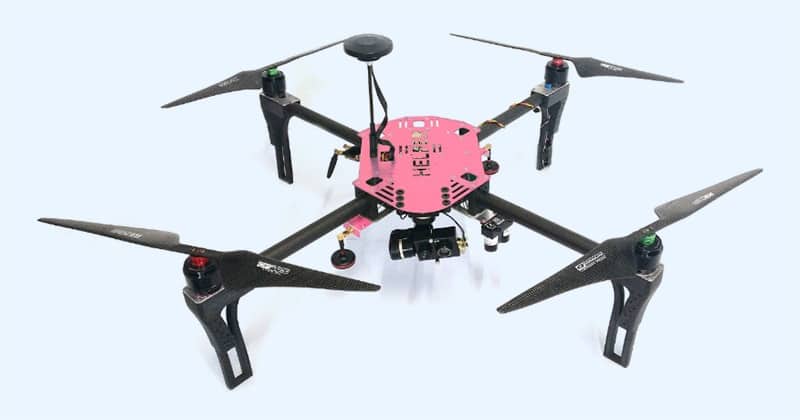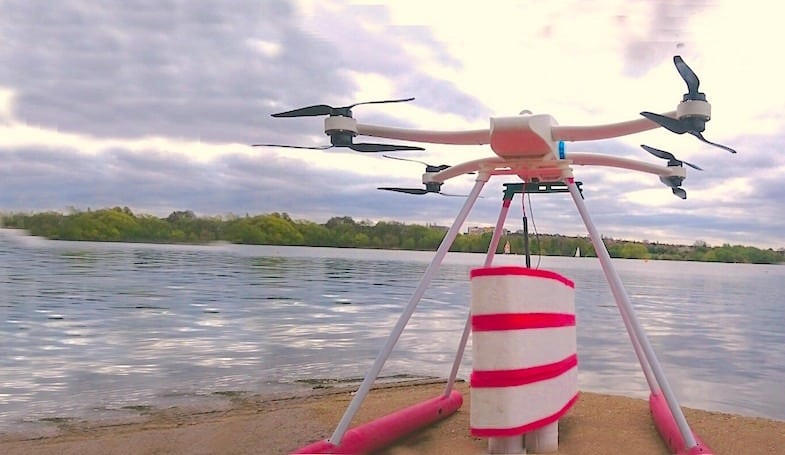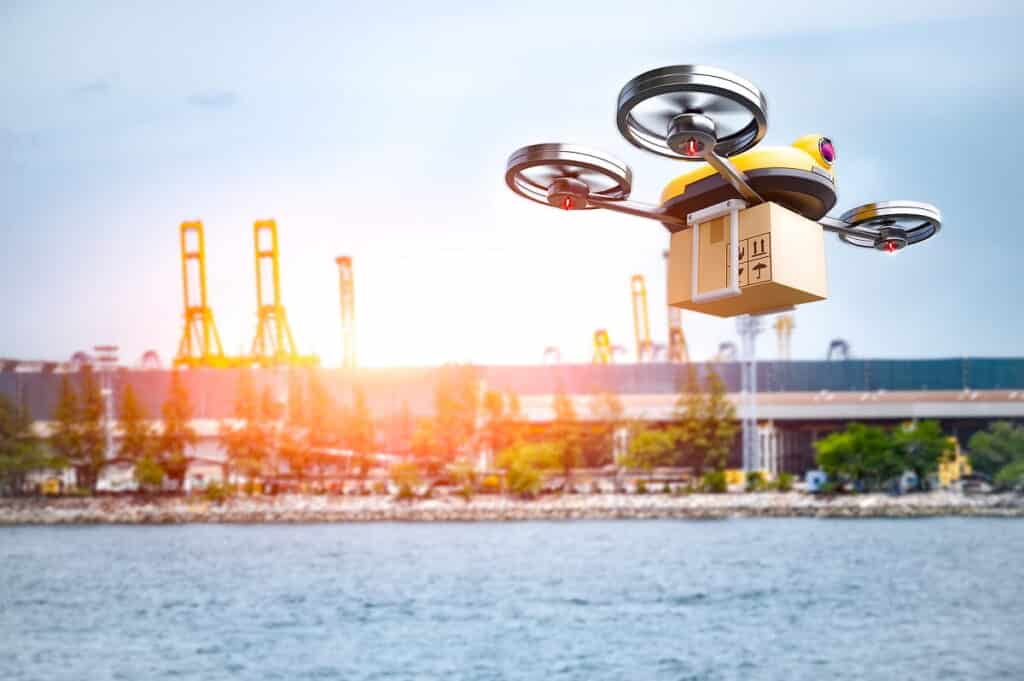Robot Lifeguards and Drones That Spot Sharks
Table of contents

If you’re toning your summer bod with the expectation that you’ll be in the company of lifeguards who look like David Hasselhoff and Pamela Anderson, then you’re setting yourself up for disappointment. Truth is, beaches and pools nowadays are dominated by senior citizen lifeguards – people aged 55 and up – because this job is no longer “cool” for this generation – no matter how many jet skis The Rock and Zac Efron have exploding in their wake. Yes, they made a Baywatch movie starring these two tools which was every bit as bad as it sounds:

The fact that dishwashers earn more than lifeguards doesn’t really help the profession either, so it should come as no surprise that today’s millennials don’t have any desire to save the estimated 360,000 people who drown every year around the world. Instead, robots and drones just might take over these jobs. Let’s take a look at seven startups that want to use robots and drones to save lives on beaches around the globe.
Hydronalix
Founded in 2009, Arizona startup Hydronalix has taken in an undisclosed amount of funding to develop a product line called EMILY which stands for EMergency Integrated Lifesaving LanYard. The company claims that this product “is useful for rescuing swimmers human lifeguards cannot reach”, and it’s been saving lives since as far back as 2012.
While EMILY initially takes the form of an unimpressive giant duffel bag (kind of like how David Hasselhoff looks today), NPR says that this $14,000 jet-powered buoy is “virtually indestructible”, a claim that’s backed up by the US Navy’s Office of Naval Research which helped birth the concept. The involvement of the Navy, which dates back to 2001, could also possibly explain why Mulligan built EMILY with inner gears made of Kevlar as well as aircraft-grade composites.
Source: Hydronalix
This remote-controlled 4-foot long robotic buoy is made of lightweight fiberglass and powered by an electric motor that pumps a jet of water, allowing it to swim through riptides at an impressive 24 MPH. It’s so durable that rescuers can just throw it off helicopters or bridges (yet another similarity with Hasselhoff) without worrying about damaging its chiseled physique. All you patriots out there will be thrilled to hear that the finished product is 98% made in ‘Murica – with its composite hull fresh off of the Tohono O’odham Indian reservation in Arizona.
The Ripper Group

Unmanned Aerial Vehicles (UAVs) are able to detect sharks 90% of the time when equipped with the SharkSpotter – which means in the other 10% of cases, the sharks just get to munch away – unless of course we keep a “human-in-the-loop”. Either way, this is still much better than conventional techniques where lifeguards in helicopters only have about 18% accuracy in terms of detecting danger in the water while spotters in fixed-wing aircraft are at 12% and rescuers analyzing aerial imagery are at 20-30%.
Source: The Ripper Group
Aside from sharks, this product can also detect and identify other threats in the water using real-time aerial image analysis which uses “deep learning” to detect dangerous objects. Once a shark or any other danger is spotted, the SharkSpotter – with its real-time data processing software – sends an alarm to alert lifesavers.
Apart from the SharkSpotter, The Ripper Group also has Rescue Pods (aka ULBs, which stands for “you little beauty”) which are comprised of a lifesaving flotation pod which is dropped in the vicinity of the drowning swimmers or those trapped in a rip or close to approaching sharks. The parcel, which is deployed from a Mini Ripper UAV by the rescuers on shore, has an electronic shark repellent that can keep the sharks away for up to 8 hours, a self-inflating flotation device that can carry 3-4 people, an EPIRB signaling unit, and other water and safety devices.
General Drones

Basically, the Auxdron has two primary goals – the first is to locate the victims and hover near them to direct the lifeguards to the right direction and the second is to send relevant information to the responders like the number of victims, their conditions, and the quickest exit points.
Project Ryptide

As for the company’s website, it shows absolutely no information about the project or what happened to the handful of money they received from their backers. It’s just another reason why crowdfunding is best avoided.
Helper Drone

Source: HELPER Drone
Apart from spotting drowning victims, HELPER can also identify spills of pollutants in water as well as enhance the radio communications for boats close to oil platforms and even provide images directly to any crisis room across the globe. HELPER’s main market so far is France, where some municipalities pay $700 per drone to provide HELPER rescue services. The drone also caught the attention of global oil and gas company Total – making it the first ever drone authorized to fly on an oil rig.
RTS Ideas

Source: Drone Blog
Not stopping there, the company then created an even better unit that can also be fitted with thermal cameras for nighttime missions and can operate autonomously using artificial intelligence. Fast forward to today and the website no longer appears to function. They’ve either gone into hiding as a stealth mode company or they ran out of funding and went kaput.
Microdrones GmbH

This is how it works. When a lifeguard spots someone in danger, he deploys a UAV with a RESTUBE attached to it. Once the drone reaches the location of the victim, it will stream a live video that will guide the lifeguard/pilot/operator on where to drop the RESTUBE. The device will keep the victim afloat until the lifeguards arrive.
Source: Microdrones
Big Wave Surfer Sebastian Steudtner says that “RESTUBE is the peace of mind for everybody” and it actually helped his mother to swim again. Meanwhile, some French athlete nobody has ever heard of, Loïc Branda, claims that if he swims with RESTUBE, “I feel safe, I feel free to swim further and longer but always with the same pleasure of liberty.” When the French are talking nicely about a German company, it’s got to tell you something.
Conclusion
Apart from these startups, other large corporations and municipalities are interested in the robot lifeguard space as well. The Coastal Rescue and Safety System of Dubai has already launched their own version of robotic and drone lifeguards called The Flying Rescuer. Even Vodafone is looking to take a piece of the action, with their drone operators trained by the National Agency for Safety Aviation. With robots and drones being able to improve the ability for lifeguards to save lives, adoption is a no-brainer. If these innovative technologies fail to catch on, at least it gives our senior citizens something a bit more exciting to do than hanging out at the bingo hall. And that’s not such a bad thing after all.
Sign up to our newsletter to get more of our great research delivered straight to your inbox!
Nanalyze Weekly includes useful insights written by our team of underpaid MBAs, research on new disruptive technology stocks flying under the radar, and summaries of our recent research. Always 100% free.




















